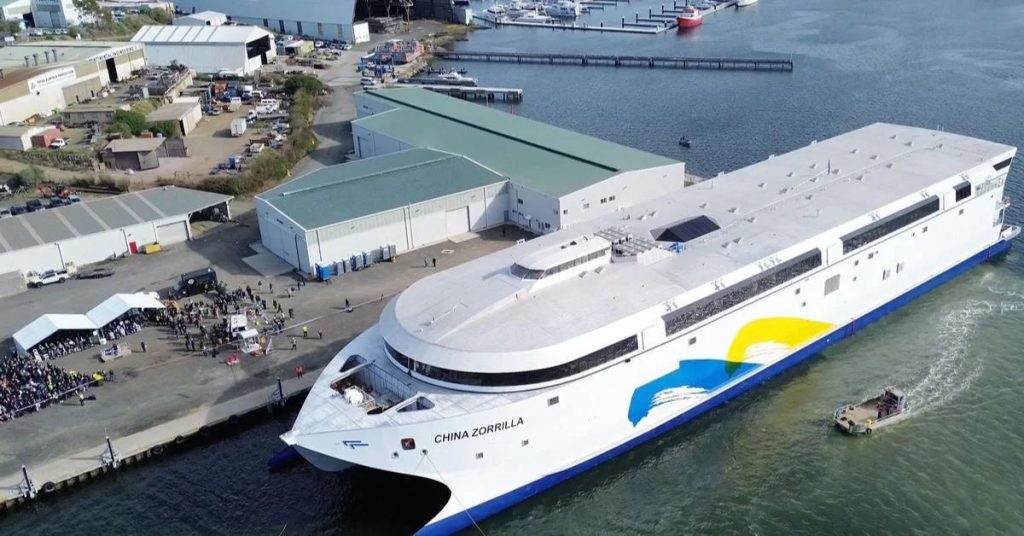In a historic milestone for sustainable innovation, Tasmanian shipbuilder Incat has officially launched Hull 096—the world’s largest battery-electric ship—at its Hobart shipyard. Commissioned by South American ferry operator Buquebus, the vessel marks a major advancement in zero-emission maritime transport. Designed to carry up to 2,100 passengers and 225 vehicles, Hull 096 will operate entirely on battery-electric power across the River Plate between Buenos Aires and Uruguay.
At 130 metres in length, it is the largest electric ship ever built and one of the most significant single export achievements in Australia’s industrial history. “This is a landmark moment not just for Incat, but for the future of maritime transport globally,” said Incat Chairman Robert Clifford. “Hull 096 is the most complex, ambitious, and important vessel we have ever delivered.”
The project continues a longstanding partnership between Incat and Buquebus—Hull 096 is the ninth vessel the Australian company has built for the South American operator. Buquebus President Juan Carlos López Mena highlighted the shared vision that turned an LNG-powered concept into a groundbreaking electric ferry. “When we discussed this new ship, Robert told me the next one would be 100% electric,” López Mena said. “I responded, ‘Then this is the ship we must build.’ Together, we committed to a bold idea—and made it a reality.
This is a milestone in private sector cooperation, driven by our shared commitment to sustainability and service excellence.” A Global Technological Benchmark The vessel is powered by over 250 tonnes of batteries and an Energy Storage System (ESS) with more than 40 megawatt-hours of capacity—making it the largest maritime battery system ever installed. The ESS, supplied by technology partner Wärtsilä, connects to eight electric waterjets, offering both high performance and zero-emission propulsion. “This collaboration demonstrates that large-scale electrification in maritime transport is no longer a future concept—it is operational today,” said Roger Holm, President of Wärtsilä Marine and Executive Vice President at Wärtsilä Corporation. “It sets a new global standard for sustainable ferry operations.”
Final Fit-Out and Sea Trials Ahead With the vessel now launched, work continues on the ship’s fit-out, including a 2,300 square metre duty-free retail space—the largest of its kind on any ferry worldwide. Battery installation and energy system integration will follow, with sea trials planned for later this year on the River Derwent. “We’re not just building a ship—we’re shaping the future of transport,” said Incat CEO Stephen Casey. “Hull 096 proves that large-scale, low-emission solutions are ready today. This is a moment of pride for Tasmania and for Australian manufacturing.”
Tags: Battery, Biofuels, Global warming, Green House Gases, IMO, Shipping



Recent Posts
Port of Brisbane Unveils Vision 2060 to Drive Smarter, Cleaner, and More Connected Future
Wärtsilä to Deliver Hybrid Propulsion Systems for Vertom Group’s New Low-Emission Vessels
Latvian port receives electric Konecranes Gottwald Mobile Harbor Crane
Sustainable Ocean Economy Vital for Human Development, Says UNDP at UN Ocean Conference
Green Hydrogen Costs in India Could Drop by 40%, Says IEEFA-JMK Report
Cavotec Secures €1.55 Million Shore Power Contract for Port of Antwerp-Bruges
APM Terminals and SANY Marine sign landmark agreement to accelerate decarbonisation
The Port of Gothenburg takes big step towards shore power connection for container and car/RoRo vessels